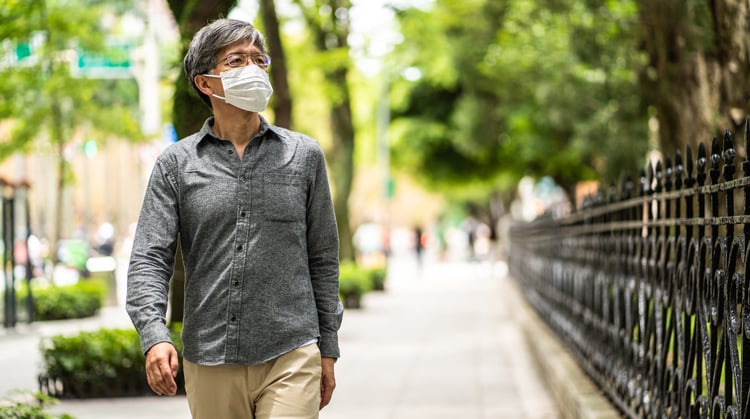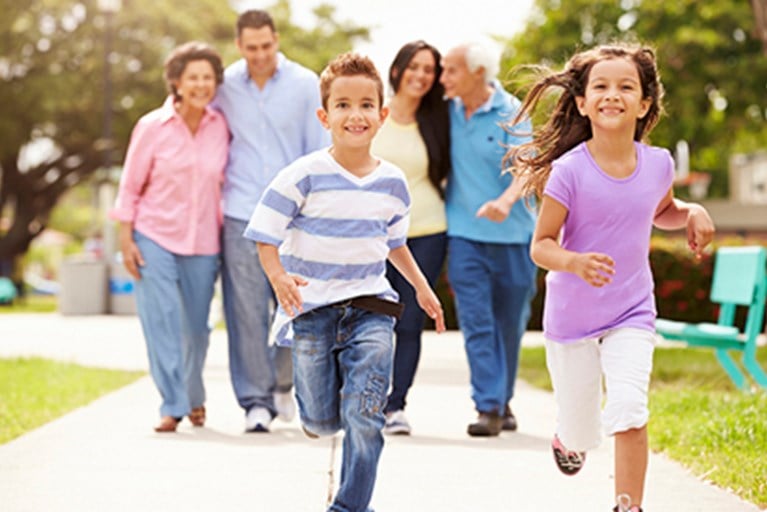
The following tips can help you return to fitness after a typical case of COVID-19.
Note: Consult your doctor before resuming physical or sports activities after testing positive for COVID-19. If your symptoms were severe, or you spent time in the ICU, you may need to temporarily restrict exercise or obtain a clearance from a cardiologist before resuming any challenging physical activity.
Even a mild to moderate bout with COVID-19 can leave you feeling weak. Some people experience a loss of balance and coordination, a lack of endurance, and memory problems. Appropriate physical activity can help you recover.
Exercise may be the last thing on your mind, but it is key to regaining your fitness. Regular physical activity benefits your physical, mental, and social health. It is important after initial recovery from COVID-19 to get moving. Physical activity helps to improve:
- Strength.
- Endurance.
- Breathing ability.
Around 10% of people infected with COVID-19 will have problems that linger for months after the infection is gone. The condition is known as "long COVID" or PASC, which stands for Post-Acute Sequelae of SARS-CoV-2.
If you have symptoms of long COVID, contact your primary care doctor before starting an exercise program. Exercising on your own may not be right for everyone living with long COVID.
For everyone, it is important to listen to your body (and your doctor or physical therapist) when returning to exercise after COVID-19 or any illness.
If you were inactive before COVID-19, you should begin with light physical activity, such as walking slowly. If you regularly took part in moderate physical activity (such as briskly walking 7,000 steps per day) before COVID-19, returning to that level of exercise as soon as you are able is encouraged. But take a more cautious return to higher intensity exercise.
Getting back to full exercise intensity should progress slowly. Monitor your response to exercise and don’t power through symptoms. Only increase your exercise duration and intensity if you responded well to the previous level.
If you experience extreme fatigue (either physical or mental) after exercise, stop exercise and contact your physician. This condition is known as postexertional malaise.
Caution: Stop exercise and seek medical attention if you experience any of the following symptoms:
- Chest pain.
- Difficulty breathing.
- Cold sweat.
- Rapid heart rate or palpitations.
- Dizziness.
Here is advice for returning to physical activity after a typical case of COVID-19.
1. During Your Illness and for the First 7 Days, Just Move, Even a Little
Your body has been through a lot. Take things slowly. For some a trip from the bed or couch to the bathroom may be as much as you can handle in the early days. A flight of stairs may make you want to plop on the nearest easy chair.
Get up and move as many times throughout the day as you can. Try standing from sitting several times in a row. Stretch for the sky with both arms and take several deep breaths each time you rise. Doing this light movement throughout the day will help to preserve your balance and strength. It also can help you start to build back your strength and endurance.
2. After 7 Days, Take a Walk
If a little movement is not too challenging, try taking a brief walk. Begin at first by walking down the hall a few times or around your house or apartment building. If that feels good, try a five-, 10-, or 15-minute walk around your neighborhood and work up to walking 7,000 steps per day at a pace where you can walk and hold a conversation. If your intensity causes you to gasp for breath, you are pushing yourself too hard. The Centers for Disease Control and Prevention provides a helpful description, Measuring Physical Activity Intensity, can to help you measure yours.
Everyone, regardless of age, condition, or ability, should try to get the amount of daily physical activity recommended by the Department of Health and Human Services.
Note: If after 30 days postinfection you still have difficulty returning to your prior exercise level, seek advice from your doctor or a physical therapist experienced in treating long COVID. A physical therapist can monitor your vital signs and tolerance for exercise. They can work with you on:
- Pacing.
- Conserving energy.
- Addressing breathing pattern disorders to help you reach your goals.
- Progressing your exercise intensity safely.
3. Ready to Run?
If you tolerate walking, you may be ready to resume jogging, swimming, biking, or other activities. First, start your chosen activity at a slower pace and intensity (50% capacity) than your pre-COVID-19 level. Exercise for up to 15 minutes. Then, increase your pace for one minute before returning to the slower pace for another five to 10 minutes. Then repeat. When you can do these intervals for 30 minutes or more, you're ready to progress.
At this phase of recovery, you may be ready for a higher intensity level. Ease back into more intense physical activity by slowly increasing the duration each day or week.
For Athletes, Recreational and Elite
If you're a regular fitness fanatic, be careful not to overdo it. Refrain from starting off at your earlier exercise level. It is important to allow your body time to get back to doing activities at your pre-COVID-19 pace.
A Journal of Science and Sports Medicine article recommends the following for a return to pre-COVID-19 exercise protocols for athletes with minimal to no symptoms:
- Begin with 50% intensity for 15-30 minutes for the first three days. If you experience extreme fatigue and lack of exercise tolerance, rest for 48 hours before trying light exercise.
- If you tolerate exercise at 50% intensity for three days, increase to 75% intensity for 30 minutes for the next three days.
- If you tolerate 75% intensity, resume normal pre-COVID-19 exercise thereafter.
Physical therapists are movement experts. They improve quality of life through hands-on care, patient education, and prescribed movement. You can contact a physical therapist directly for an evaluation. To find a physical therapist in your area, visit Find a PT.


